Yay! You’ve finally finished writing your book! Time to send it off to the designer and start selling on Amazon, right? Wrong! I don’t think we can stress this enough, but editing your book is the most important part of publishing. Let me repeat, editing your book is the most important part of publishing. I’m sure that’s not news to you, but it is always an important thing to remember and make sure you add to your book’s budget. So you are probably asking yourself, “What goes into editing my book?” Well, there are actually quite a few different steps to editing and you’re going to want to know what each of the steps include.
More often than not we talk with authors who don’t want to work with an editor. I want to be clear, you can’t edit your own book. In fact, people who are too close to you or your book can’t edit your book. It is important, yes important, to have someone who is not too close to you or your book edit it. Why? Because editing can be a bit harsh and you want to be sure your editor does not feel as if they must protect your feelings. Your editor’s job is to comb through your story to make it the best it can be; personal feelings aside.
The best advice I can give you is: Hiring a professional editor is a must. When working with an editor you want to be sure you know how the process works. So what are the steps to editing your book? I’ll take you through the four steps Colleen and I follow when we edit a book:
- Substantive Editing
- Copy Editing
- Proofreading
- Printer’s Proofread
Substantive Editing

The first editing style, substantive editing, is like its name says; substantive. During this edit we read through your manuscript looking at major themes, chapter and section layout, plot development, and other big picture items. During this edit of the manuscript, we make sure when a reader picks up the book, they’ll be able to follow along without being confused.
An example of substantive editing is: do you have excessive flashbacks? Sometimes those flashbacks make it hard for the reader to follow along, and we would suggest tightening up those flashbacks and combining or getting rid of some altogether. In a nonfiction book, we might see you mention a topic in three or four places throughout the manuscript and depending on how it reads we might suggest moving these to one place within your book or expanding on the sections you have so people have a coherent and easier read.
Copy Editing
The second style is copy editing. Here we look at individual paragraphs making sure they flow together and the sentences within make sense. We also take a closer look at the characters, making sure they are consistent throughout the book. You might also see us make corrections on word choice, i.e., did a character speak or exclaim? While hopefully all of the substance has already been corrected, you might need to go back and add some extra insights or clarity during this read. Copy editing could almost be called detail editing. This editing read through is where we catch the smaller structural errors and make sure each part of your book is readable.
Proofread
The third editing style is proofreading. Proofreading is the process of going through each and every word, punctuation mark, and formatting style to make sure everything is correct. Some things we might catch include repeated words, the incorrect usage of a homophone (there, their, and they’re), the wrong usage of quotation marks (they are supposed to go after the period in the sentence), and other typos. Proofreading catches the fine details and mistakes you would see in your book.
Printer’s Proofread

The last step when editing your book is the printer proofread. This edit is when an editor reads your printer’s proof and catches any mistakes made in the layout or printing process. So what is a printer’s proof? It is a single copy of your book you receive from your printer. The printer receives the book file design from your book designer and it is the file they use to print your book. You want to make sure your editor catches any mistakes in your printer’s proof. If you miss this step you might end up purchasing hundreds of books with a mistake(s) that would be caught during this important proof. While everything should be ready to go, you do want to make sure things like the page numbers are in the correct order. You’ll want them to check to make sure all the formatting is correct; for instance, if you have a design at the top of each page. Once during a final proof, we caught a book missing an entire page!
Finishing up editing your book
Throughout the process of editing your book you will have to work closely with your editor. They won’t take your draft and run through each step and turn up a finished book. You’ll need to work with them on re-writes or clarification, and it may take a few edits during each step. Depending on what part of the process you’re working on, you may focus on the overall book or just a smaller section. It’s imperative to have an open line of communication with your editor and work with them. They are not there to make you look or feel bad, they want you and your book to be a great success!
When you look for an editor you may not see these four steps laid out as I did in this blog. Editors could call these processes something different or may include different steps in the process. However, these are the main steps you find every editor following, in one way or another. One process is not more important than another; they all build off of each other, but one step we see many first-time authors skip is the review of the printer’s proof.
No matter how many times you write a book or how long you’ve been honing your craft, you’ll want to take the time (and money) to hire a great editor. A professional editor can save you lots of time, lots of money, and lots of heartache. The key is hiring an editor who works in the best interest of you and your book.
If you’re looking for an editor for you book, we can help with any or all of these edits. Check out our editing page or schedule a time to talk to Colleen or me.

[…] – hire the pros to edit your manuscript; they make sure the book has consistent flow and correct sentence structure, […]